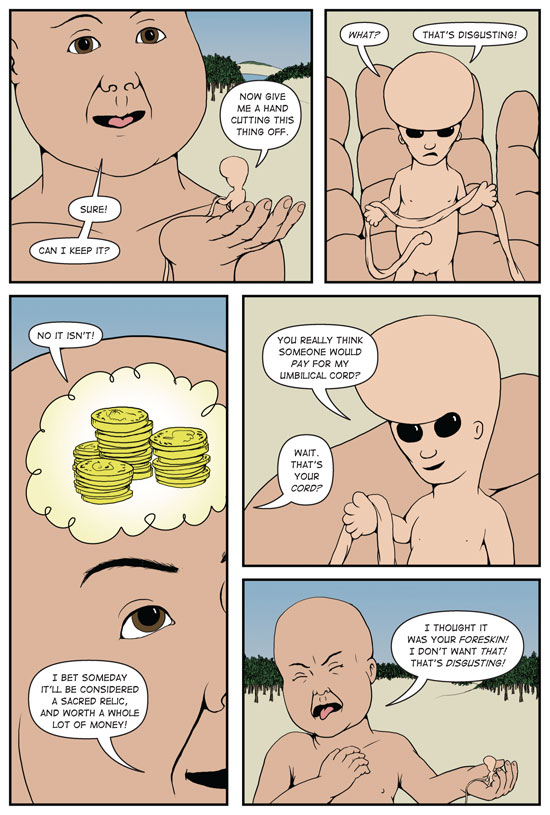I swear to you: I am not making this up.
The story, sure. But not what John is talking about. The foreskin of Jesus – formally known as the “Holy Prepuce” – is an actual holy relic.
Back in Medieval Europe, before there were autographed photos of Elvis, mint-in-bag copies of X-Men #1, and limited edition royal-wedding commemorative coins, there was a collectors’ market in relics supposedly connected to Christ. The Holy Grail is the most famous: the cup used by Jesus at the Last Supper. The Shroud of Turin is the biggest real-ish one (meaning that it definitely exists): a burial cloth with what appears to be an image of Jesus. At one point there were enough fragments of the True Cross circulating that you could’ve built a giant particle-board cathedral out of them. In churches throughout Europe you could find – or hear people claiming to have seen – the Spear of Destiny, the Crown of Thorns, the Holy Nails, blood samples, etc.
And the Holy Prepuce. Jesus was – as any good Aryan will deny ’til he’s blue in the face – a Jew, and therefore He was circumcised as an eight-day-old infant. The Gospel of Luke confirms it, it was depicted in religious art, and the event is still celebrated by some Christians, eight days after Christmas Eve, on New Year’s Day. The most sought-after Medieval collectibles were connected to the death and resurrection of Jesus, because that’s when the deep magic of salvation took place, but there were a few connected to His birth. Much like the countless shards of the True Cross, at one time there were a dozen or so supposed Holy Prepuces in Europe. What made the Holy Prepuce so special was this: it was the only piece of Jesus’ physical body left on Earth after He was taken up into Heaven after His resurrection. The lucky owner could literally touch the Holy Cock of Jesus.
As any Indiana Jones fan knows, Hitler was big into collecting holy relics, but this one was probably a little too Jewish for him.
Here’s a passage from chapter two of one of the early apocryphal texts, the Syriac Infancy Gospel (used as source material for the Qur’an’s stories about Jesus’ childhood):
1. And when the time of his circumcision was come, namely, the eighth day, on which the law commanded the child to be circumcised, they circumcised him in a cave. 2. And the old Hebrew woman took the foreskin (others say she took the navel-string), and preserved it in an alabaster-box of old oil of spikenard. 3. And she had a son who was a druggist, to whom she said, “Take heed thou sell not this alabaster box of spikenard-ointment, although thou shouldst be offered three hundred pence for it.” 4. Now this is that alabaster-box which Mary the sinner procured, and poured forth the ointment out of it upon the head and feet of our Lord Jesus Christ, and wiped it off with the hairs of her head.
I hadn’t read this passage yet when I wrote this scene. Nice to know that the confusion between Jesus’ foreskin and his “navel string” has a basis in history. I especially like the tie-in to the canonical gospel incident in which Mary “The Sinner” Magdalene washes Jesus’ feet, saying here that the oil was infused with his own infant smegma.
I swear to you: I am not making this up.







